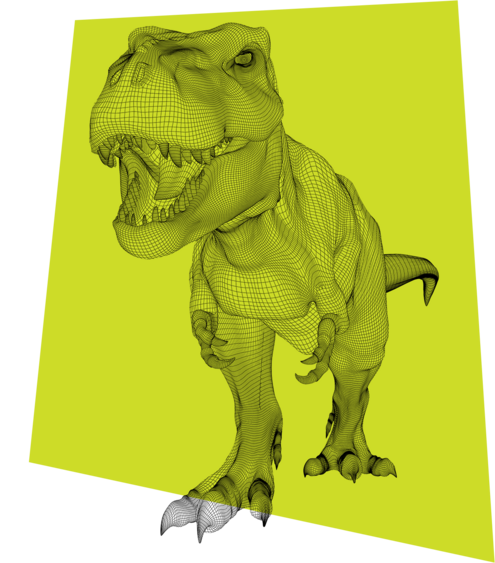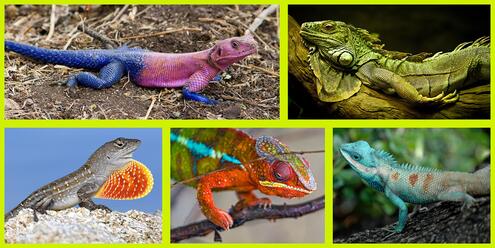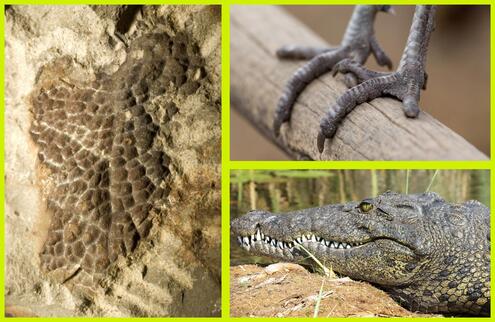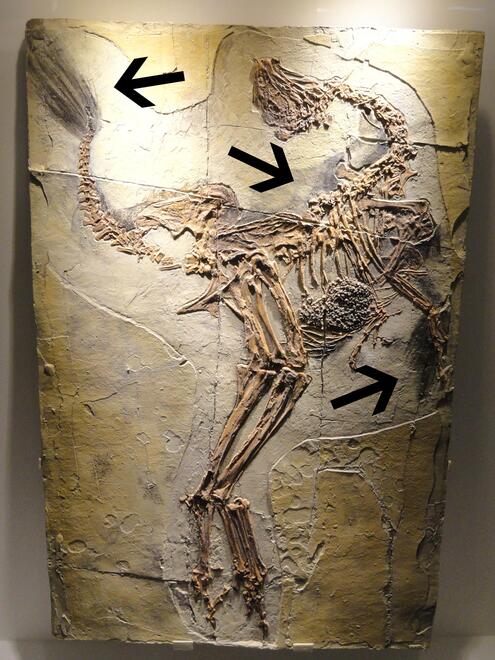
Dress up a
T. REX
Scientists are collecting clues about what colors Tyrannosaurus rex was, but they have a long way to go. So go ahead! Choose your own colors. Your guess might be right.
Move the sliders to change the skin color, eye color, and feathers of this T. rex.
WHAT DID T. REX REALLY LOOK LIKE?
We know the anatomy of Tyrannosaurus rex from fossils , but what did it look like in the flesh? Nobody really knows. But scientists are collecting clues by studying its close relatives.
Skin Color
A fleshed out T. rex is often shown with drab colors, like a crocodile. But reptiles come in every color of the rainbow. So T. rex could have been as brightly colored too, like the living animals shown here. Skin coloration and patterning may have helped T. rex camouflage , sneak up on prey, or attract a mate.

Scales
The photo on the left shows fossil skin impressions of an adult T. rex. An adult T. rex was probably covered with scales, like those on crocodiles or the legs of birds.

Feathers
Scientists haven’t found feathers on a T. rex fossil yet. But they’ve found feathers preserved in many other dinosaur fossils. Take a look at this fossil of Caudipteryx, a distant relative of T. rex. It had feathers covering its entire body. So maybe T. rex had some feathers too. Scientists think that T. rex hatchlings may have been covered in fuzz, like a duckling. If adults had feathers, they were likely for display, and may have covered the arms, head, and tail.

Fossilized remains of Caudipterix (a relative of T. rex) showing dark impressions of feathers around the neck, tail, and wing bone areas.




 Biodiversity
Biodiversity
 Brain
Brain
 Genetics
Genetics
 Marine BiOLogy
Marine BiOLogy
 MicrobiOLogy
MicrobiOLogy
 PaleontOLogy
PaleontOLogy
 ZoOLogy
ZoOLogy
 AnthropOLogy
AnthropOLogy
 ArchaeOLogy
ArchaeOLogy
 Astronomy
Astronomy
 Climate Change
Climate Change
 Earth
Earth
 Physics
Physics
 Water
Water
